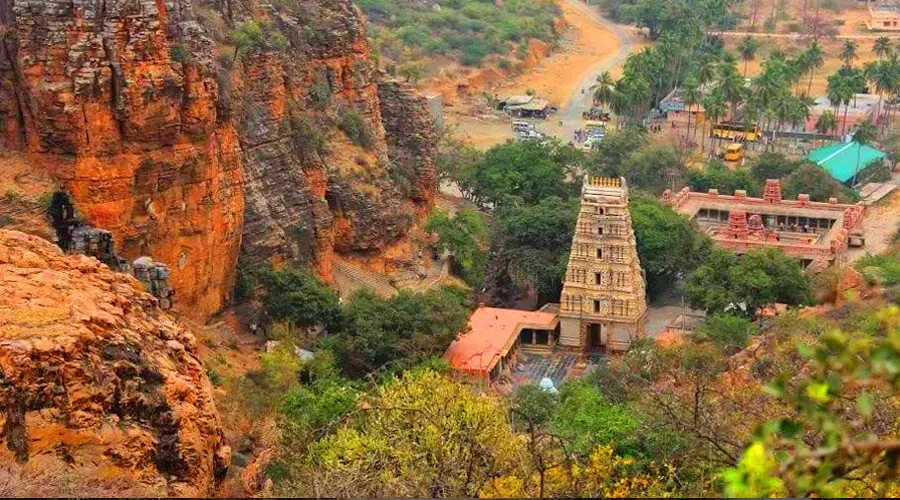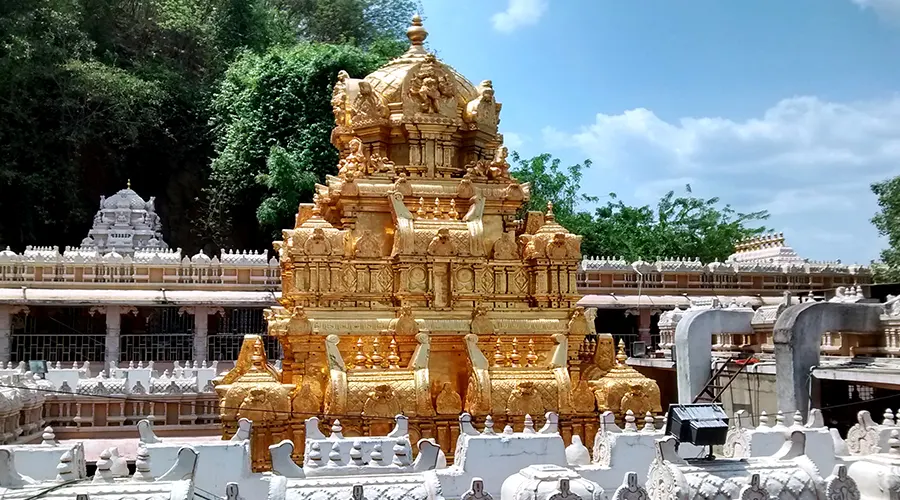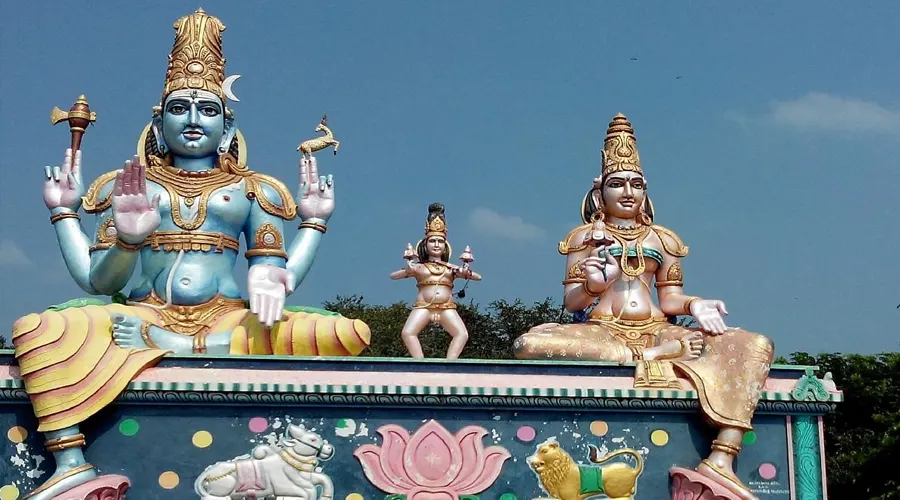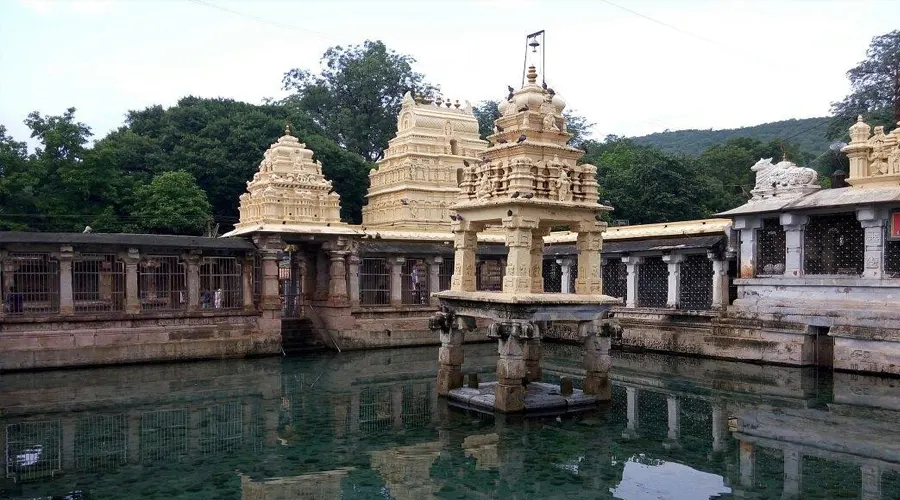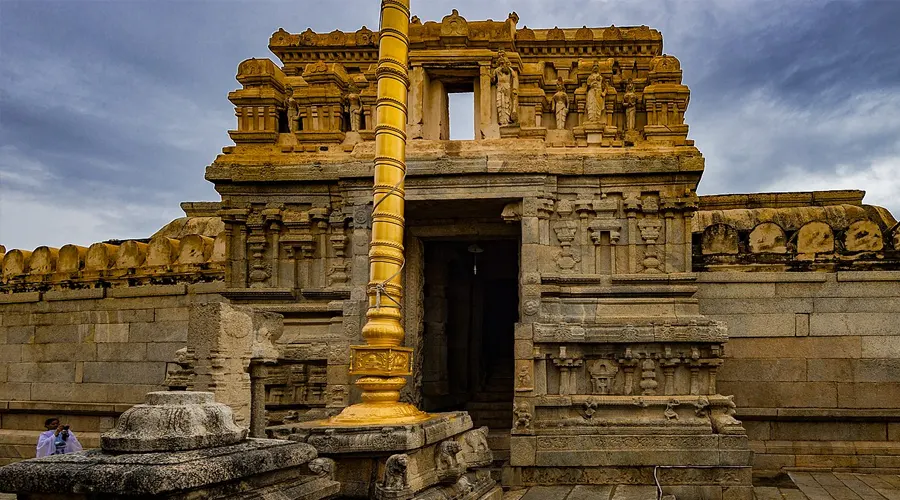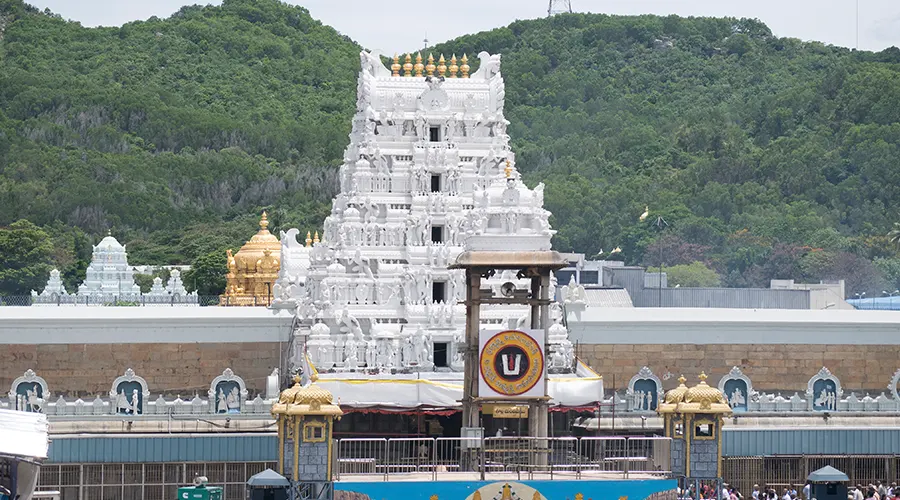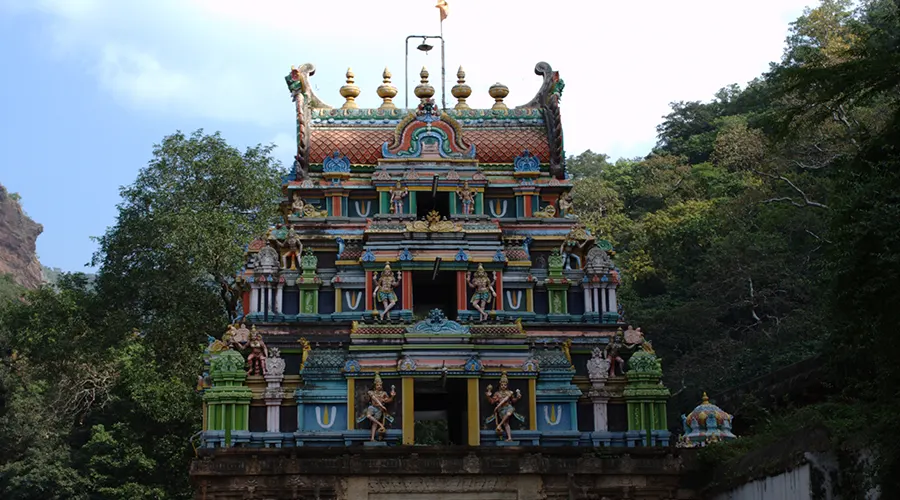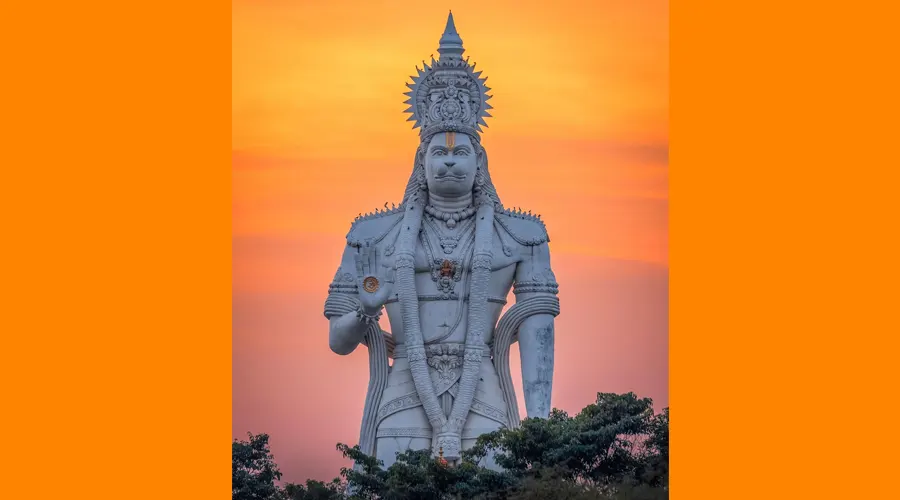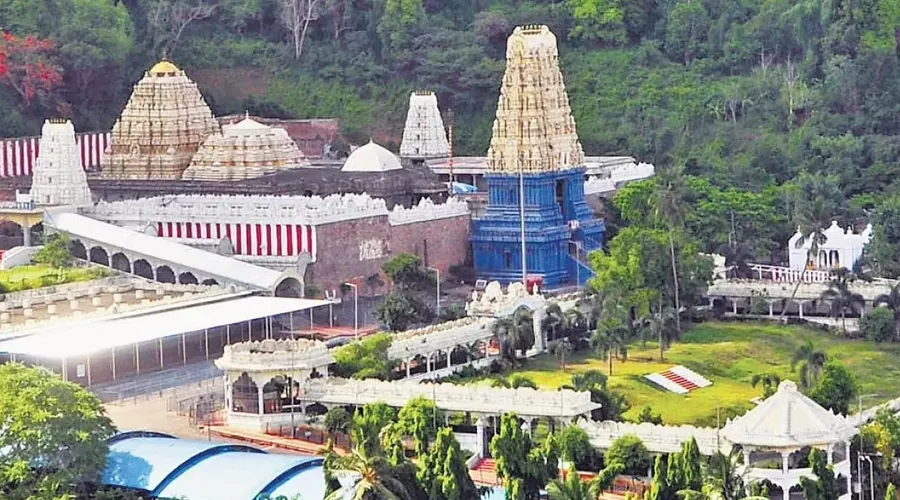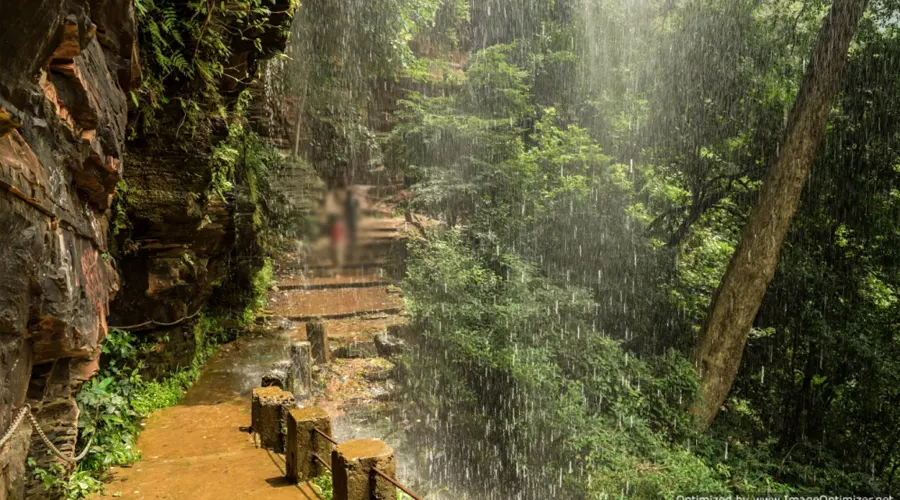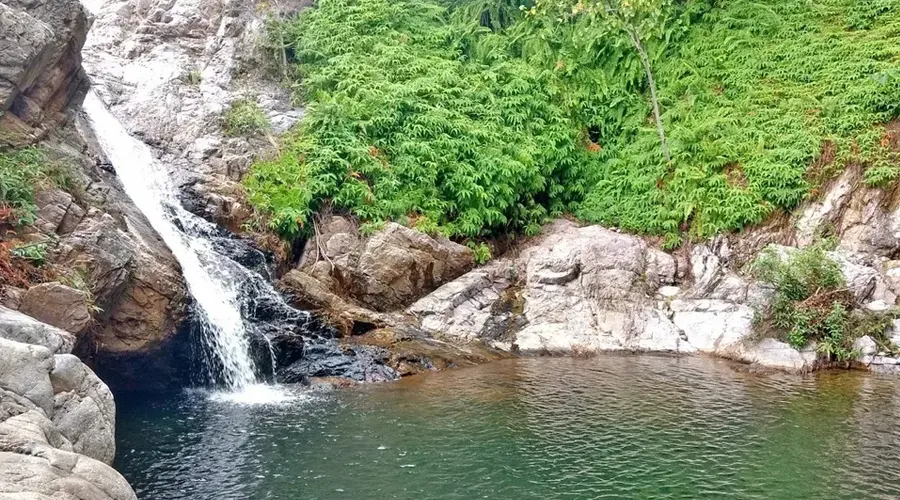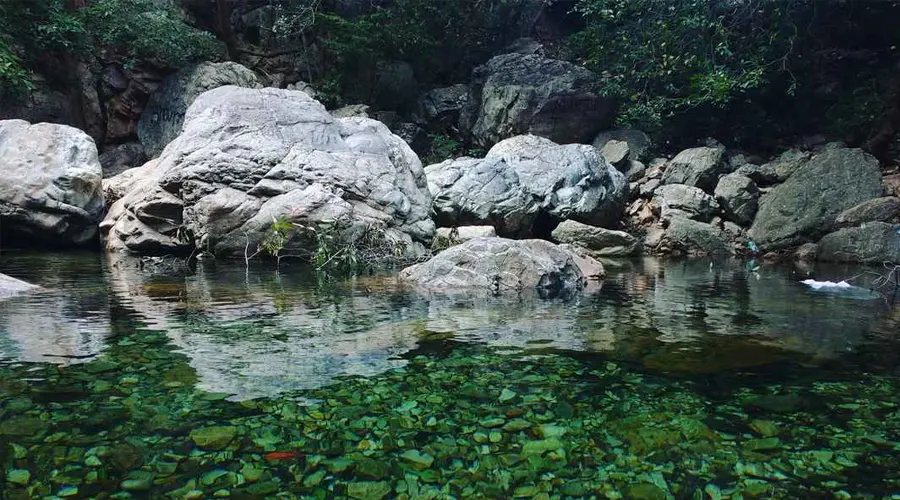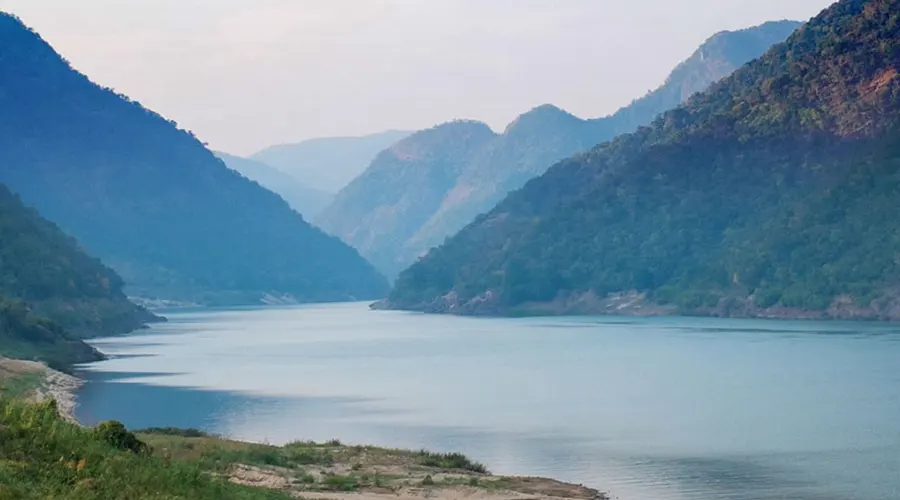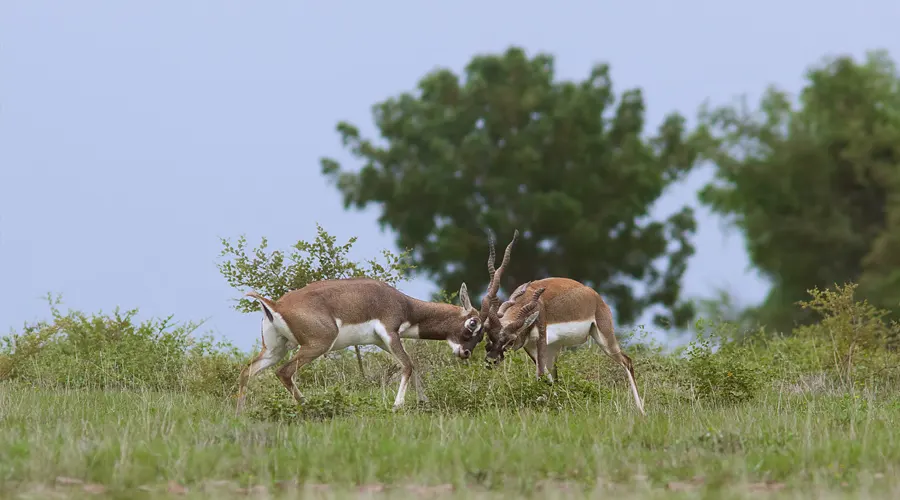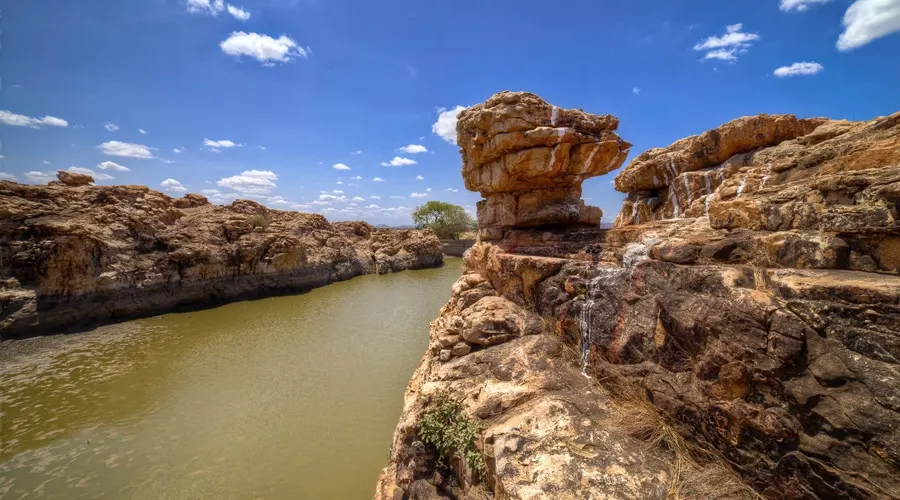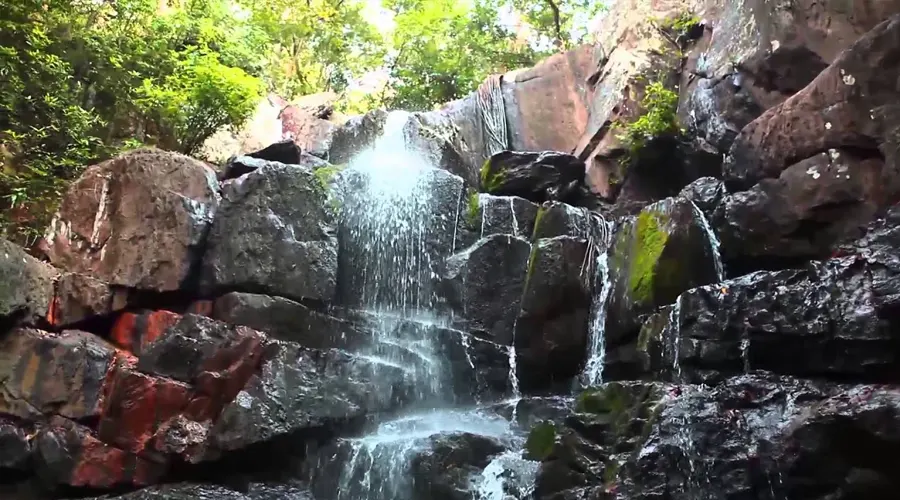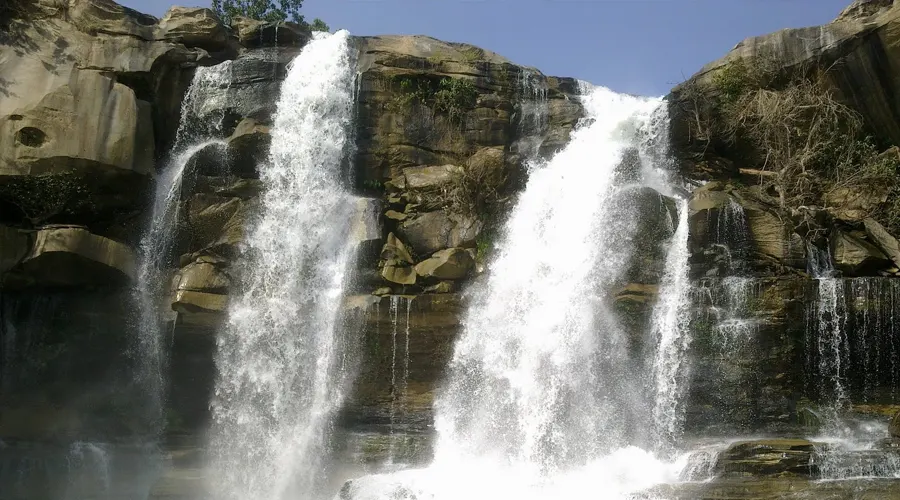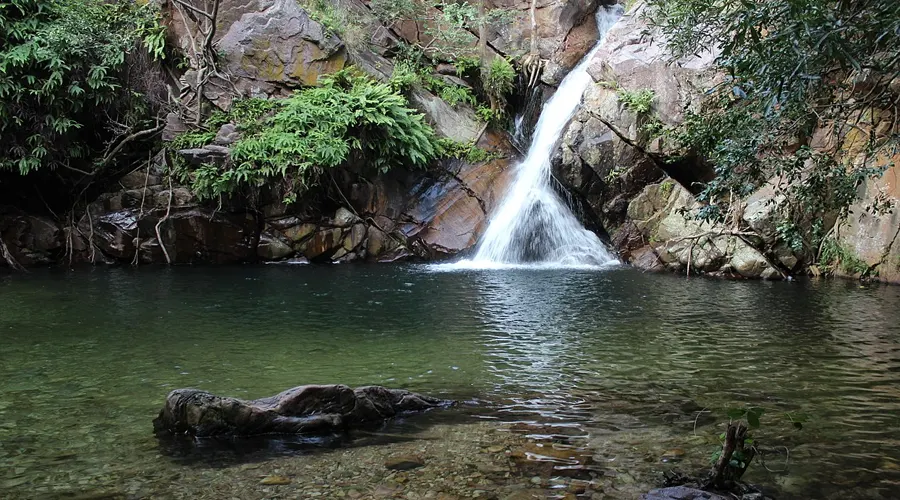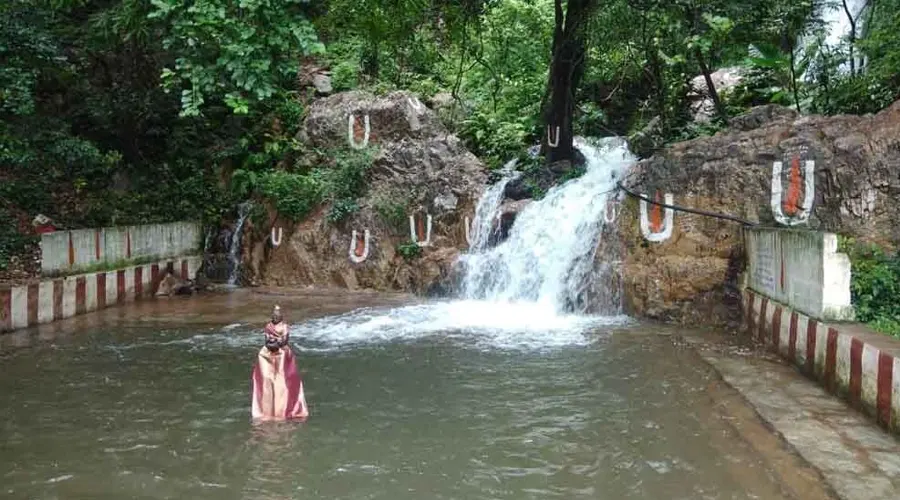Sri Yaganti Temple
Yaganti a popular tourist site that is famous for its temple of Sri Yagantiswamy, which is dedicated to Lord Shiva is located in the Kurnool district of Andhra Pradesh. Visiting this place is the perfect way to get a feel of Andhra Pradesh tourism. The ancient Sri Yagantiswamy temple dates back to the 5th and 6th centuries, it is also known as Uma Mahewhwara Temple. The idol of Shiva and Parvathi fused, called Ardhanareeswara is carved out of a single stone and is a marvelous idol of the deities to behold.
Tourists and especially devotees of Lord Shiva flock to the temple in huge numbers during the festival of Maha Shiv Ratri which falls around February or March each year and is celebrated with great pomp and show at the temple. The magnificent temple commands high reverence not only because of its religious significance but also because it has many striking and unusual features. To begin with, Yaganti is perhaps the only temple dedicated to Lord Shiva, where he is worshipped in the form of an idol, instead of Shiva Linga.
The temple also has the Agastya Pushkarni, where water flows from the bottom of the hill, throughout the year. Worshippers take a dip in the holy water as a form of worship to the deity.
History of Sri Yaganti Temple
Different stories are revolving around the true origins of the temple. According to one account, the sage Agastya wanted to build a temple for Lord Venkateswara at this site. For some reason, the statue of the Lord could not be installed here, and the sage then penanced for Lord Shiva. When Lord Shiva appeared, the sage realized that the place suited him better.
He then requested Lord Shiva to appear in the Ardhanareeswara form, to which he obliged, and which is the present form worshipped here. According to a second story, when a devotee of Lord Shiva, known by the name of Chitteppa, was worshipping the Lord; the latter appeared to him in the form of a tiger.
Chitteppa recognized that it was Lord Shiva in the tiger form, and he exclaimed 'Neganti Shivanu ne kanti', which means 'I saw Shiva I saw'. The numerous natural caves in the hills around the temple were home to several saints throughout the ages, and have even housed the Great Telugu saint and astrologer, Potuluri Veera Brahmam Garu.
Yaganti Caves
There are quite a few cave temples in Yaganti, adjacent to the main temple. These caves hardly receive any natural light, but the artificial light provided by the numerous diyas lit inside the caves makes them come alive. Prominent caves include the Agastya cave, which is believed to be the place where saint Agastya performed penance to get Lord Shiva's blessings; the Veera Brahmam Cave, the site where Potuluri Veera Brahmam, who is known as India's Nostradamus, wrote some chapters of his prophecies in the Kala Gnanam and the Venkateswara Cave. All these caves are open for worship from dusk to dawn.
Architecture of Yaganti Temple
The main deities in the temple are Shiva, Goddess Parvati, and Nandi. The temple lies amidst the lush greenery of the Yerramala hills which are of immense beauty and have a lot of natural caves.
Devotees believe that the size of the Nandi (bull) in front of the temple is growing continuously. Locals are of the belief that the Nandi initially was much smaller in size. According to them, an experiment was carried out on the idol and the composition of the rock from which the idol was built is such, that it has a tendency to enlarge by nature, on its own. Devotees do Pradakshinas around the temple as per tradition. Temple staff are believed to have removed one pillar as the Nandi had become bigger. The saint Sri Veera Brahmendra Swami believes that the Basavanna (stone Nandi) of the temple would come alive and shout at the end of Kali Yuga.
The temple has caved in and around its premises. Devotees can visit the Agastya Cave which has 120 steps leading up to it. It is believed that this is the cave where Sage Agastya performed penance for Shiva. The cave houses an idol of Devi that is worshipped.
The Venkateswara Cave has the damaged idol of Sri Venkateswara. The steps to this cave are steep. It is believed that this idol existed before the Tirumala Tirupati Temple. As the foot of the idol was damaged, it could not be worshipped. According to the saint Sri Veera Brahmendra Swami, this cave could be an alternative to the Tirupati Temple.
The Veera Brahmam Cave is where the saint Sri Veera Brahmendra Swami wrote some of his Kala Gnanam.
The temple has a small Pushkarni (pond) on the premises. The water is believed to flow into this pond from the bottom of the hill through the mouth of Nandi. No one knows how the pond is supplied with water all year around and this is highlighted by the skills of the ancient Vishwakarma Sthapathis
